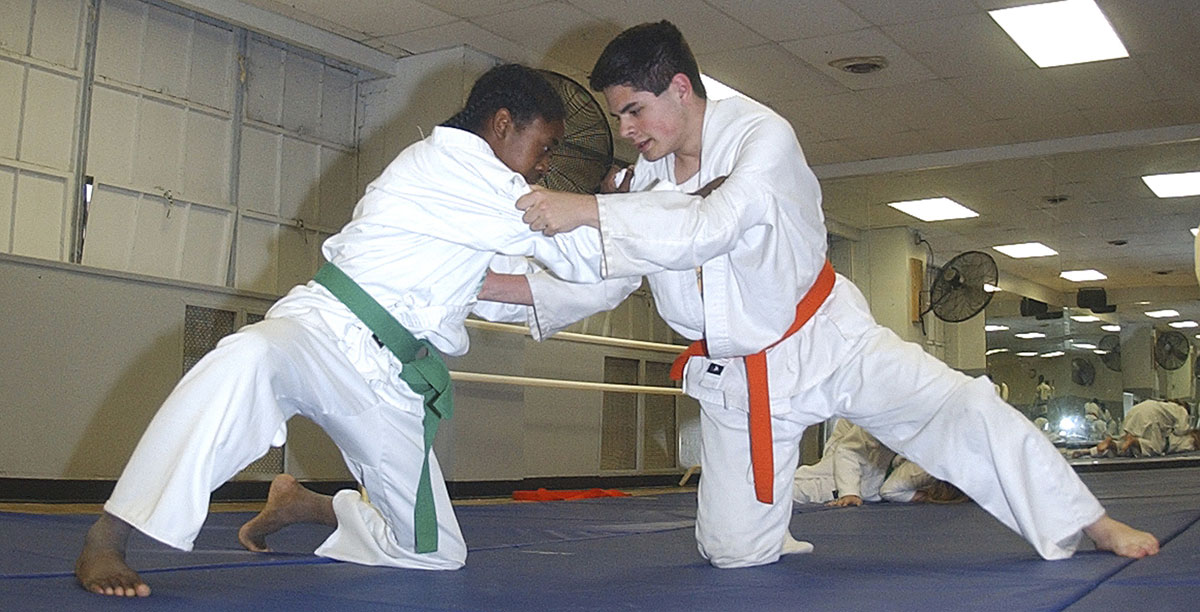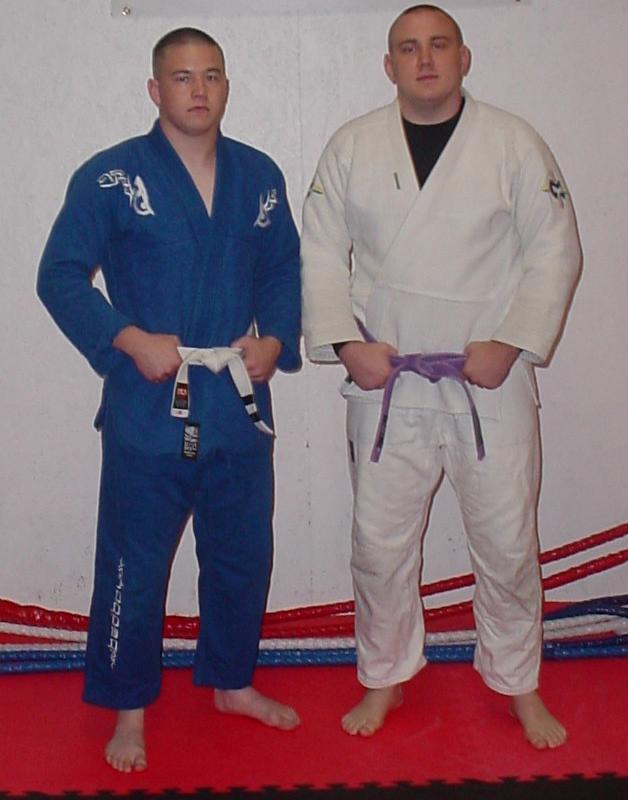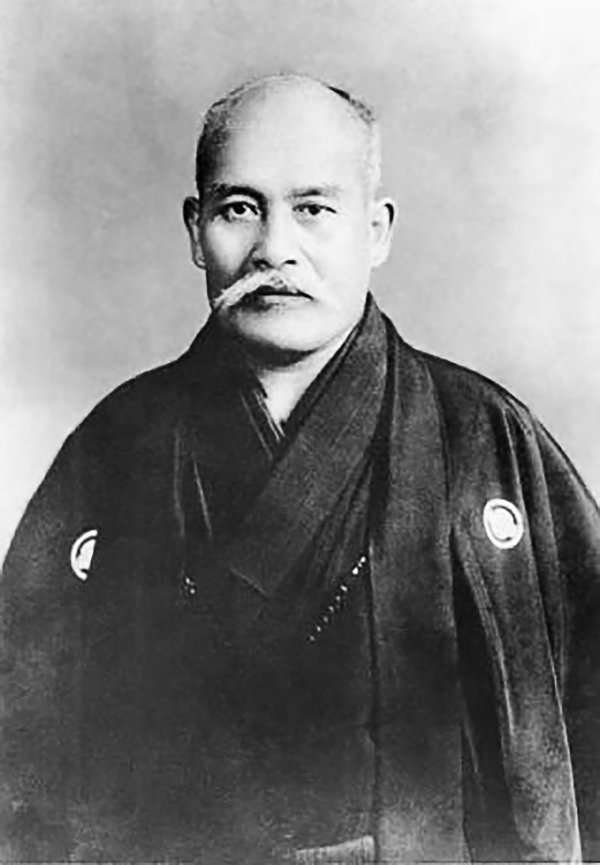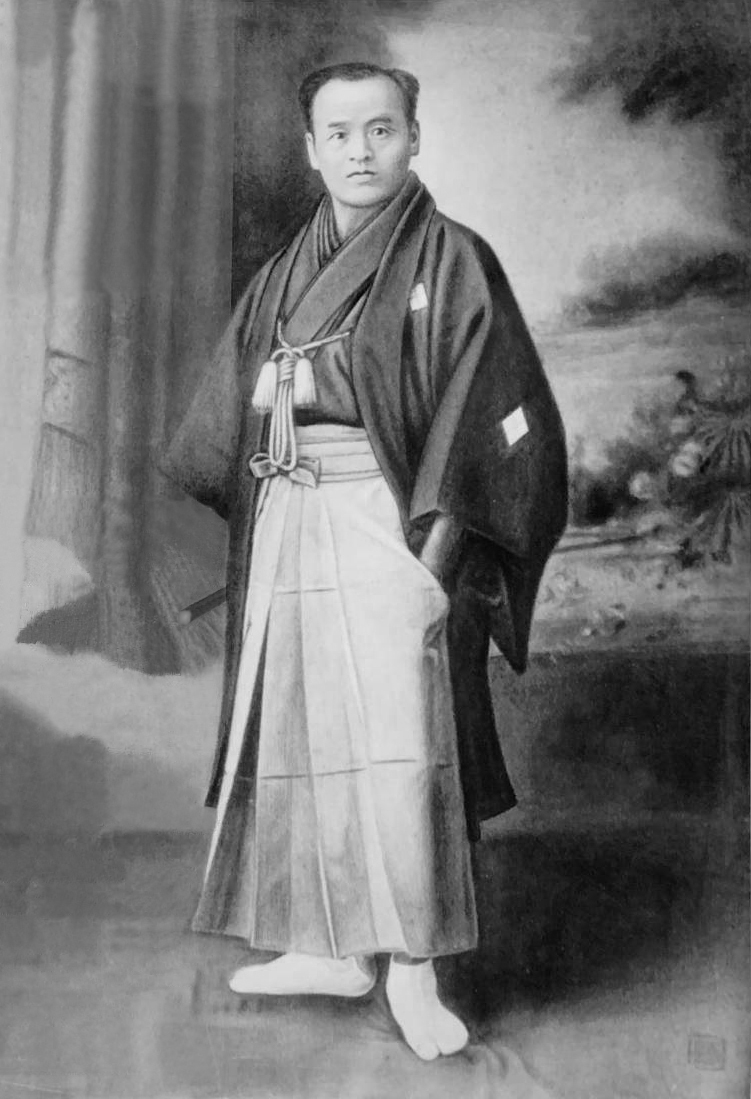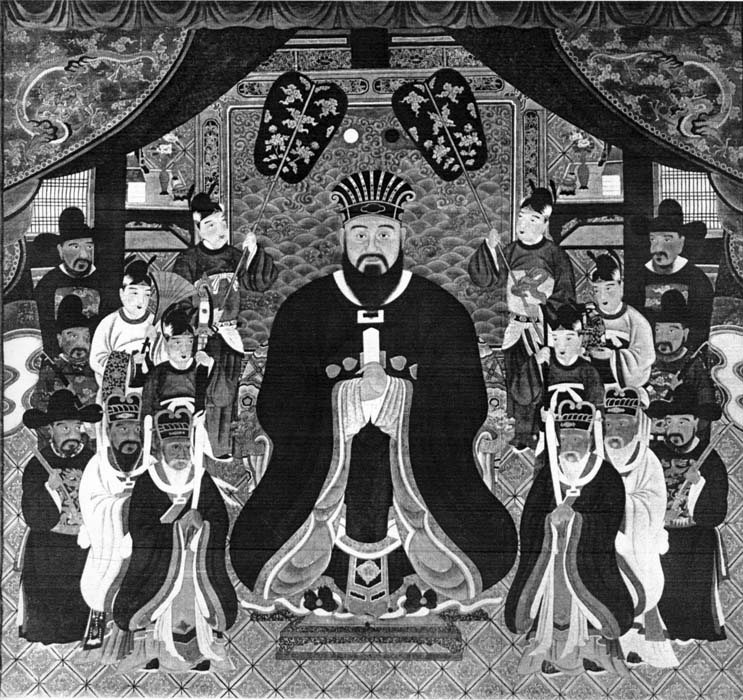|
Dogi
(, 'practice', , 'dress' or 'clothes'), also known as or , is a traditional uniform worn for training in Japanese martial arts and their derivatives. Emerging in the late 19th century, the was developed by judo founder Kanō Jigorō. Origin Japanese martial arts historian Dave Lowry speculates that Kanō derived the uniform's design from the uniforms of Japanese firefighters' heavy hemp jackets, . By 1920, the as it exists today was worn by Kanō's students for judo practice; a photo displayed in the Kodokan (judo headquarters) taken in 1920 shows Kanō himself wearing a modern . Until the 1920s, Okinawan karate practice was usually performed in everyday clothes. Given the social climate between the Japanese and Okinawans during this time, karate was seen as brutish compared to Japanese martial arts, which had their roots in samurai culture, such as jujutsu. To help market karate to the Japanese, Gichin Funakoshi – the founder of Shotokan karate and the instructor respon ... [...More Info...] [...Related Items...] OR: [Wikipedia] [Google] [Baidu] |
Judogi
''Judogi'' (柔道着 or 柔道衣), also called keikogi or dogi, is the formal Japanese language, Japanese name for the traditional uniform used for Judo practice and competition. A judogi is somewhat similar to a karategi (空手着 or 空手衣, "karate uniform") as it shares a common origin. Jigoro Kano derived the original judogi from the kimono and other Japanese garments around the turn of the 20th century, and, as such, the judogi was the first modern martial arts training uniform. Over the years, the sleeves and pants have been lengthened, the material and fit have changed, the traditional unbleached cotton is now a bleached white, and blue judogi has become available; nevertheless, the uniform is still very close to that used 100 years ago. Other martial arts, notably karate, later adopted the style of training uniform that is used in Judo. A judogi comprises three parts that are usually cut from different fabrics: a very heavy jacket (uwagi), lighter canvas pants (shit ... [...More Info...] [...Related Items...] OR: [Wikipedia] [Google] [Baidu] |
Judo
is an unarmed gendai budō, modern Japanese martial art, combat sport, Olympic sport (since 1964), and the most prominent form of jacket wrestling competed internationally.『日本大百科全書』電子版【柔道】(CD-ROM version of Encyclopedia Nipponica, "Judo"). Judo was created in 1882 by Kanō Jigorō () as an eclectic martial art, distinguishing itself from its predecessors (primarily Tenjin Shin'yō-ryū, Tenjin Shinyo-ryu jujutsu and Kitō-ryū jujutsu) due to an emphasis on "randori" (, lit. 'free sparring') instead of alongside its removal of striking and weapon training elements. Judo rose to prominence for its dominance over Kodokan–Totsuka rivalry, established jujutsu schools in tournaments hosted by the Tokyo Metropolitan Police Department (警視庁武術大会, ''Keishicho Bujutsu Taikai''), resulting in its adoption as the department's primary martial art. A judo practitioner is called a , and the judo uniform is called . The objective of competitive ju ... [...More Info...] [...Related Items...] OR: [Wikipedia] [Google] [Baidu] |
Karategi
''Karate gi'' (空手着 or 空手衣), also called keikogi or dogi, is the formal Japanese name for the traditional uniform used for Karate practice and competition. Description A karategi is somewhat similar to a judogi (柔道着 or 柔道衣, ''Judo uniform'') as it shares a common origin; however, the material and cut of the uniform is generally much lighter and looser fitting. The heaviest of Karategi is only compared to some judogi at . Because of the nature of Karate training which emphasizes striking, kicking, and a more limited range of standing throws compared to Judo the karategi has evolved in a manner that maximizes mobility and speed without the extremely coarse and strong fabric required for grappling and throwing found in Judo. They are made from smooth cotton which may be brushed or ribbed for unrestricted movement and added comfort. Reinforced stitching is common, as to compensate for the stresses put on the gi. Inferior karategi are often cut from a light fa ... [...More Info...] [...Related Items...] OR: [Wikipedia] [Google] [Baidu] |
Brazilian Jiu-Jitsu Gi
The Brazilian jiu-jitsu gi is the training uniform adapted from the judo ''keikogi'' (wikt:稽, 稽wikt:古, 古wikt:着, 着) for use in Brazilian jiu-jitsu. A ''gi'' (wikt:着, 着), meaning dress or clothes, is composed of a heavy cotton jacket, reinforced drawstring pants, and a belt which communicates Brazilian jiu-jitsu ranking system, rank. Some schools require the jacket and trousers to be the same color, while more relaxed schools do not enforce matching top and bottom color. The Brazilian jiu-jitsu gi is often referred to as ''kimono'' by Brazilians. Some Jiu-Jitsu schools avoid using a gi and instead focus on no-gi jiu-jitsu; 10th Planet Jiu Jitsu is an example of this. General regulations The only colors allowed for international championships are white, black or blue. In some jurisdictions, this is relaxed to allow any single solid color. According to article 8 of International Brazilian Jiu-Jitsu Federation, IBJJF rules, a competition gi must conform to the ... [...More Info...] [...Related Items...] OR: [Wikipedia] [Google] [Baidu] |
Aikido
Aikido ( , , , ) is a gendai budō, modern Japanese martial art which is split into many different styles including Iwama Ryu, Iwama Shin Shin Aiki Shuren Kai, Shodokan Aikido, Yoshinkan, Renshinkai, Aikikai, and Ki Aikido. Aikido is now practiced in around 140 countries. It was originally developed by Morihei Ueshiba, as a synthesis of his martial studies, philosophy and religious beliefs. Ueshiba's goal was to create an art which practitioners could use to defend themselves against attacks, while also protecting the attackers from injury. Aikido is often translated as "the way of unifying (with) Qi, life energy" or as "the way of harmonious spirit". According to the founder's philosophy, the primary goal in the practice of aikido is to overcome oneself instead of cultivating violence or aggressiveness. Morihei Ueshiba used the phrase to refer to this principle. Aikido's fundamental principles include: (entering), , (breathing control), (triangular principle), and (turn ... [...More Info...] [...Related Items...] OR: [Wikipedia] [Google] [Baidu] |
Kodokan
The , or ''Kōdōkan'' (講道館), is the headquarters of the worldwide judo community. The ''kōdōkan'' was founded in 1882 by Kanō Jigorō, the founder of judo, and is now an eight-story building in Tokyo. Etymology Literally, ''kō'' (講) means "to lecture", ''dō'' (道) means "gendai budo, way," and ''kan'' (館) is "a public building". Together it can be translated as "a place for the study of the way." Function The Kodokan Institute offers classes for those who want to master judo. The program is authorized as a non-regular school by the Tokyo Metropolitan Government. Its courses include the theories and practice of judo, and matters of general education. The course is divided into two parts: a general course for novices, and special courses for those who have completed the general course or its equivalent. The Kodokan also issues ranks, and many ''judoka'' (practitioners of judo) around the world become Kodokan members and have their ranks registered with the ... [...More Info...] [...Related Items...] OR: [Wikipedia] [Google] [Baidu] |
Aikido
Aikido ( , , , ) is a gendai budō, modern Japanese martial art which is split into many different styles including Iwama Ryu, Iwama Shin Shin Aiki Shuren Kai, Shodokan Aikido, Yoshinkan, Renshinkai, Aikikai, and Ki Aikido. Aikido is now practiced in around 140 countries. It was originally developed by Morihei Ueshiba, as a synthesis of his martial studies, philosophy and religious beliefs. Ueshiba's goal was to create an art which practitioners could use to defend themselves against attacks, while also protecting the attackers from injury. Aikido is often translated as "the way of unifying (with) Qi, life energy" or as "the way of harmonious spirit". According to the founder's philosophy, the primary goal in the practice of aikido is to overcome oneself instead of cultivating violence or aggressiveness. Morihei Ueshiba used the phrase to refer to this principle. Aikido's fundamental principles include: (entering), , (breathing control), (triangular principle), and (turn ... [...More Info...] [...Related Items...] OR: [Wikipedia] [Google] [Baidu] |
Kendo
is a modern Japanese martial art, descended from kenjutsu (one of the old Japanese martial arts, swordsmanship), that uses bamboo swords ( shinai) as well as protective armor ( bōgu). It began as samurai warriors' customary swordsmanship exercises, and today, it is widely practiced within Japan and has spread to many other nations across the world. History Swordsmen in Japan established schools of ''kenjutsu'' (the ancestor of kendo). These continued for centuries and form the basis of kendo practice today.. Formal kendo exercises known as ''kata'' were developed several centuries ago as ''kenjutsu'' practice for warriors. They are still studied today, in a modified form. The introduction of bamboo practice swords and armor to sword training is attributed to during the Shotoku Era (1711–1715). Naganuma developed the use of this armor and established a training method using bamboo swords. , third son of Naganuma and the eighth headmaster of the Kashima Shinden Jik ... [...More Info...] [...Related Items...] OR: [Wikipedia] [Google] [Baidu] |
Karate
(; ; Okinawan language, Okinawan pronunciation: ), also , is a martial arts, martial art developed in the Ryukyu Kingdom. It developed from the Okinawan martial arts, indigenous Ryukyuan martial arts (called , "hand"; ''tī'' in Okinawan) under the influence of Chinese martial arts. While modern karate is primarily a striking art that uses punches and kicks, traditional karate training also employs Throw (grappling), throwing and joint locking techniques. A karate practitioner is called a . Beginning in the 1300s, early Chinese martial arts, Chinese martial artists brought their techniques to Okinawa. Despite the Ryukyu Kingdom being turned into a puppet state by Japanese samurai in 1609, after the Invasion of Ryukyu, its cultural ties to China remained strong. Since Ryukyuans were banned from carrying swords under samurai rule, groups of young aristocrats created unarmed combat methods as a form of resistance, combining Chinese and local styles of martial arts. Training emph ... [...More Info...] [...Related Items...] OR: [Wikipedia] [Google] [Baidu] |
Obi (sash)
An is a belt of varying size and shape worn with both kimono, traditional Japanese clothing and keikogi, uniforms for budō, Japanese martial arts styles. Originating as a simple thin belt in Heian period Japan, the developed over time into a belt with a number of different varieties, with a number of different sizes and proportions, lengths, and methods of tying. The , which once did not differ significantly in appearance between men and women, also developed into a greater variety of styles for women than for men. Despite the kimono having been at one point and continuing to appear to be held shut by the , many modern are too wide and stiff to function in this way, with a series of ties known as , worn underneath the , used to keep the kimono closed instead. are categorised by their design, formality, material, and use, and can be made of a number of types of fabric, with heavy brocade weaves worn for formal occasions, and some lightweight silk worn for informal occasions ... [...More Info...] [...Related Items...] OR: [Wikipedia] [Google] [Baidu] |
Korean Martial Arts
Korean martial arts ( or ) are fighting practices and methods which have their place in the history of Korea but have been adapted for use by both military and non-military personnel as a method of personal growth or recreation. The history of Korean martial arts can be traced as far back as the prehistoric era. Notable examples of unarmed martial arts include taekwondo, hapkido, ssireum, and taekkyon. For armed martial arts, Korean archery, Kumdo, Korean swordsmanship, and knife fighting exist. In November 2011, taekkyon was placed on the UNESCO Intangible Cultural Heritage of Humanity List. History Early history Wrestling, called ssireum, is the oldest form of ground fighting in Korea, while Subak was the upright martial art of foot soldiers. Weapons were an extension of those unarmed skills. Besides being used to train soldiers, both of these traditional martial arts were also popular among villagers during festivals for dance, mask, acrobatic, and sport fighting. ... [...More Info...] [...Related Items...] OR: [Wikipedia] [Google] [Baidu] |
